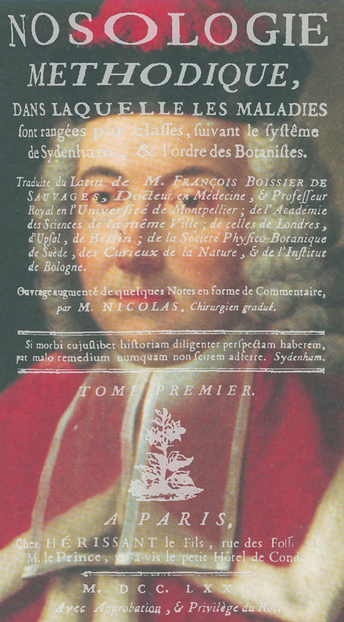François Boissier de Sauvages1706–1767
Sauvages provide a methodological nosology of diseases, based on the system introduced by Thomas Sydenham (1624-1689) and strongly informed by vitalism (i.e., founded on the idea that body functions cannot be totally reduced to mechanical and chemical processes). It also drew upon botanical classifications, with which he was familiar as conservator of the botanical gardens at Montpellier (where he received his medical training). His Nosologie Methodique placed diseases in ten categories, with further subdivisions, using symptoms rather than physiology as the basis for assignment. For example, he described a disease he called nystagmus which “consists of a spasmodic and alternate movement of the eye”, but he did little more than provide a brief description of abnormal rapid eye movements. The term did not come into common currency until the nineteenth century. He also discussed vertigo in his classification of diseases, and described it as: “An hallucination which takes place when stationary objects appear to move and rotate around us… The cause of vertigo is nothing other than an impression on the retina which is equivalent to that excited by objects that paint their images successively on different parts of that membrane”. He drew parallels with visual persistence with rapidly moving lights, and suggested that the sensitivity of the retina was changed by the retrograde movements of blood in the vessels supplying it. He did discuss the effects of body rotation, and the possibility of unconscious eye movements during and after rotation were entertained. Sauvages corresponded with Linnaeus and sent botanical specimens to him.
